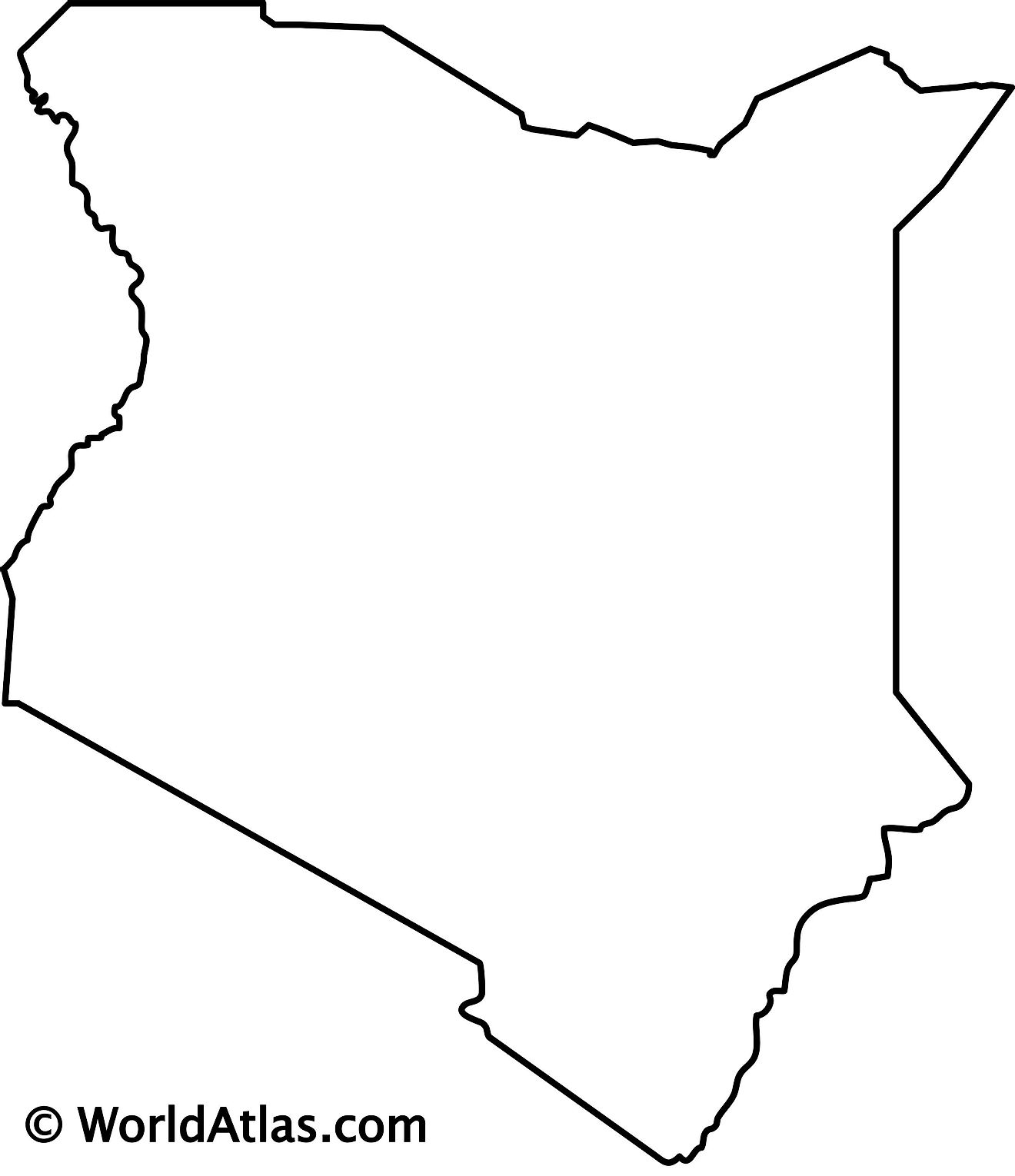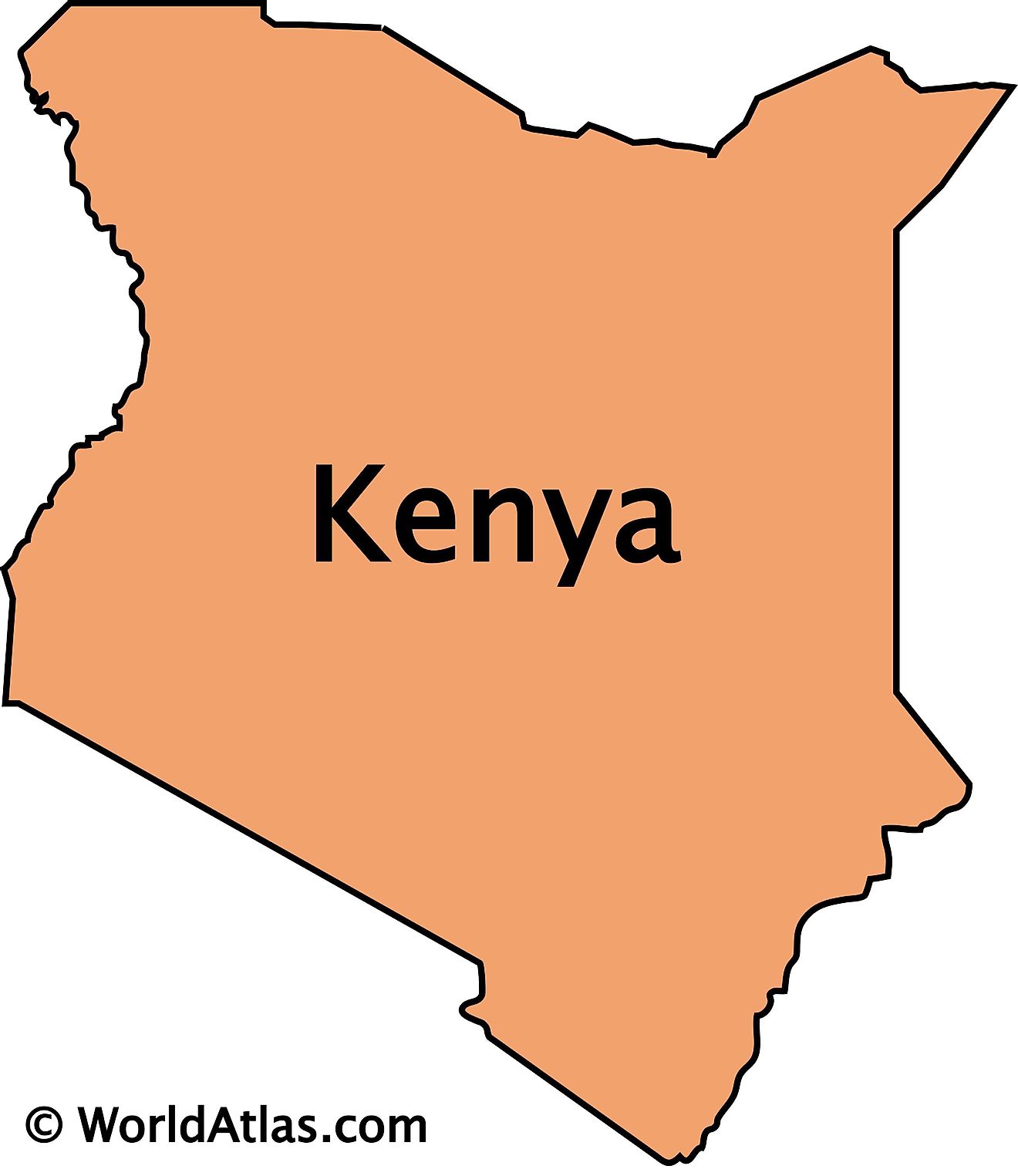Maps of Kenya
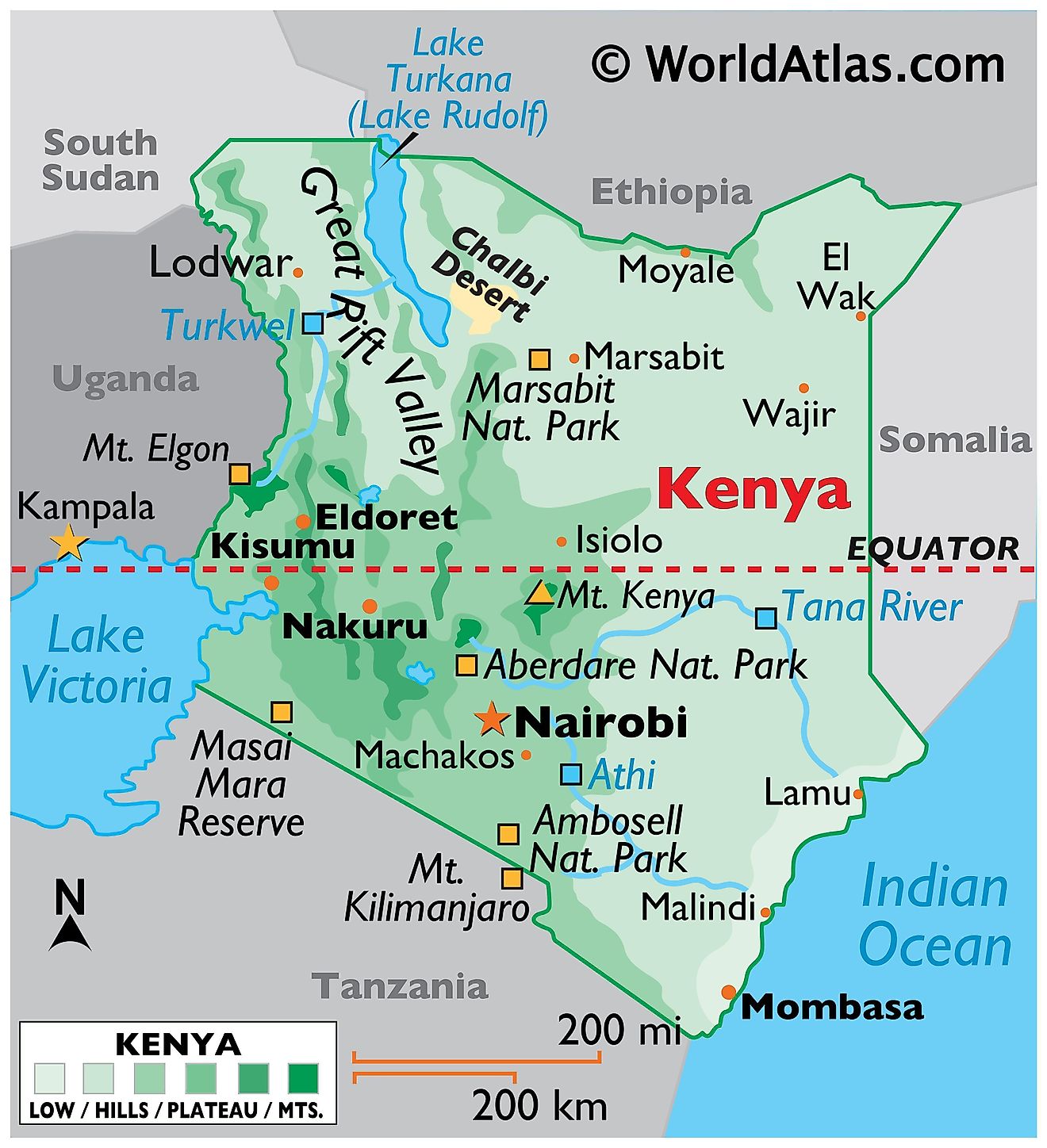
Kenya, an east African country, shares borders with five other countries: Uganda to the west, South Sudan to the northwest, Ethiopia to the north, Somalia to the east, and Tanzania to the south. Its southeast flank abuts the Indian Ocean. The total area of Kenya encompasses approximately 580,650 km2 (224,962 mi2).
The country's geography divides roughly into the coastal areas, the Eastern Plateau, the Rift Valley, the Western Highlands, and the Northern Desert, which is part of the Arid and Semi-Arid Lands (ASALs) of Kenya.
The Coast: Kenya's coastal area along the Indian Ocean extends roughly 536 km (333 mi). This area features a low-lying, fertile plain with several river deltas. The coastal region has a warm, tropical climate which supports the growth of mangrove swamps, palm trees, and the proliferation of various agricultural crops like coconuts, cashews, and citrus fruits. Mombasa, the major city in this region, serves as an important commercial and tourism hub.
The Eastern Plateau: Inland from the coast, the land rises into the Eastern Plateau. This expansive region consists of a series of low-lying plateaus and plains, interspersed with minor hill ranges and inselbergs. The plateau's altitude varies between 300 m (984 ft) and 900 m (2,953 ft) above sea level, but the Chyulu Range and the Taita Hills reach over 2,134 meters (7,000 feet). It supports grassland vegetation and is mainly used for ranching and farming, although it is also part of the ASALs and is considered semi-arid.
The Rift Valley bisects Kenya from north to south, featuring a chain of volcanoes, some of which are still active, and several freshwater and alkaline lakes. The Valley hosts a significant portion of the country's population due to its fertile volcanic soils suitable for agriculture. Towns such as Nakuru and Naivasha dot the valley, and it's also home to renowned natural parks like Hell’s Gate and Lake Nakuru National Park.
The Western Highlands: To the west of the Rift Valley rise the Western Highlands, which include several of the highest peaks in Africa. Among these are Mount Kenya, the country's highest point at 5,199 m (17,057 ft) above sea level, and Mount Elgon, which borders Uganda. These highlands have a cooler climate than the rest of the country, and the rich soil supports the cultivation of tea and coffee, two of Kenya's main export crops.
The Northern Desert, covering the regions of the northern Rift and beyond, constitutes Kenya's most arid region. This area sees minimal rainfall, resulting in sparse vegetation. It includes Lake Turkana, the world's largest permanent desert lake and the world's largest alkaline lake.
Bodies of Water: Major bodies of water in Kenya include Lake Victoria, the largest lake in Africa, which Kenya shares with Uganda and Tanzania. This lake supports a large population and is a vital source of fish for the local communities. In addition, the Tana River is the country's longest river, originating from the Aberdare Mountains and flowing into the Indian Ocean. The river provides a crucial source of water for irrigation and hydroelectric power.
Finally, several significant islands exist within Kenya's territorial waters. Lamu Island, part of the Lamu Archipelago in the Indian Ocean, is noteworthy. Its Swahili heritage and well-preserved traditional architecture have led to its recognition as a UNESCO World Heritage site.
Counties of Kenya Map
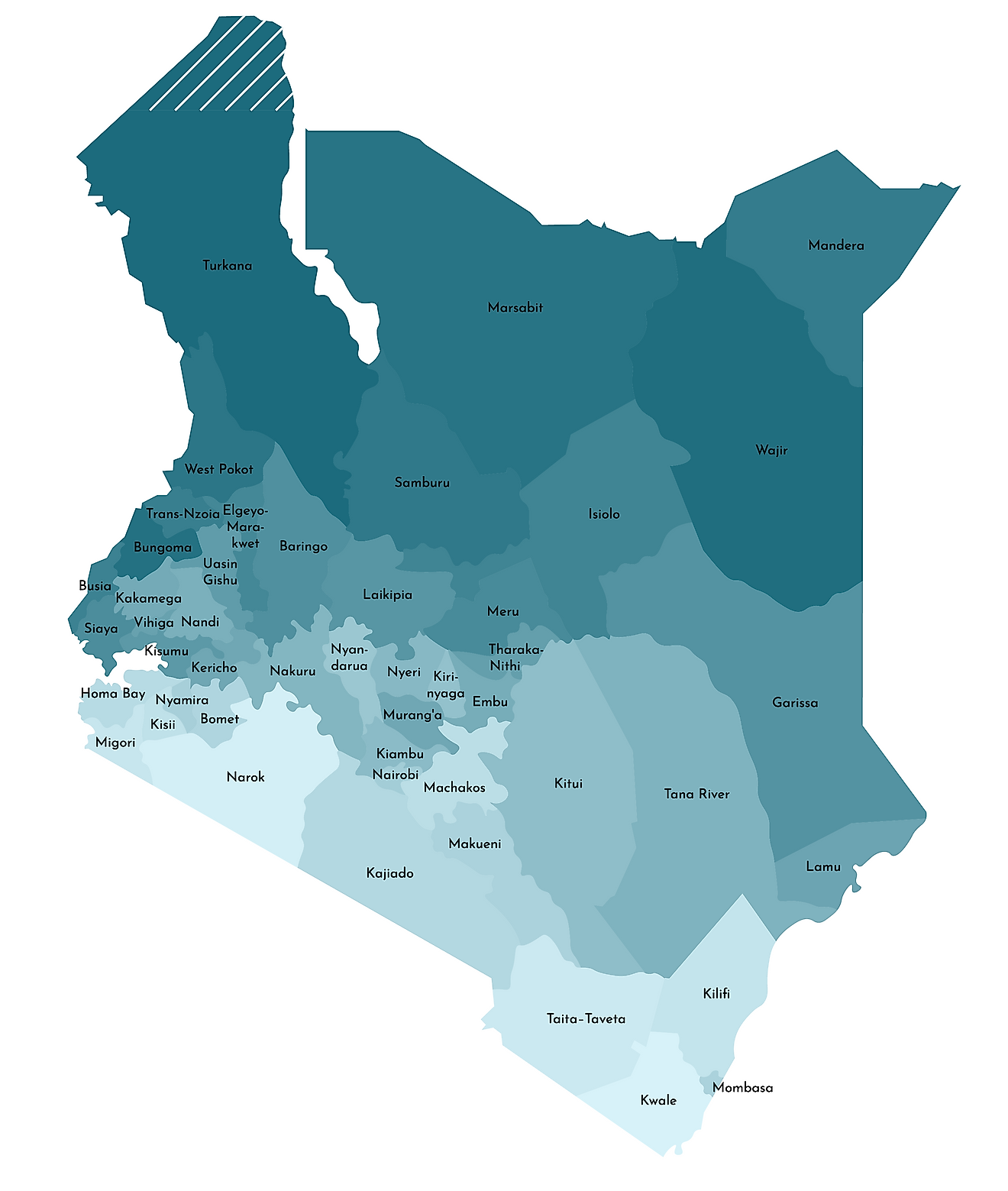
Kenya is divided into 47 counties. In alphabetical order, they are: Baringo, Bomet, Bungoma, Busia, Elgeyo/Marakwet, Embu, Garissa, Homa Bay, Isiolo, Kajiado, Kakamega, Kericho, Kiambu, Kilifi, Kirinyaga, Kisii, Kisumu, Kitui, Kwale, Laikipia, Lamu, Machakos, Makueni, Mandera, Marsabit, Meru, Migori, Mombasa, Murang'a, Nairobi City, Nakuru, Nandi, Narok, Nyamira, Nyandarua, Nyeri, Samburu, Siaya, Taita/Taveta, Tana River, Tharaka-Nithi, Trans Nzoia, Turkana, Uasin Gishu, Vihiga, Wajir, and West Pokot.
With an area of 71,597.8 sq. km, Turkana is the largest county in Kenya. Nairobi which is the national capital city is the most populous one.
Where is Kenya?
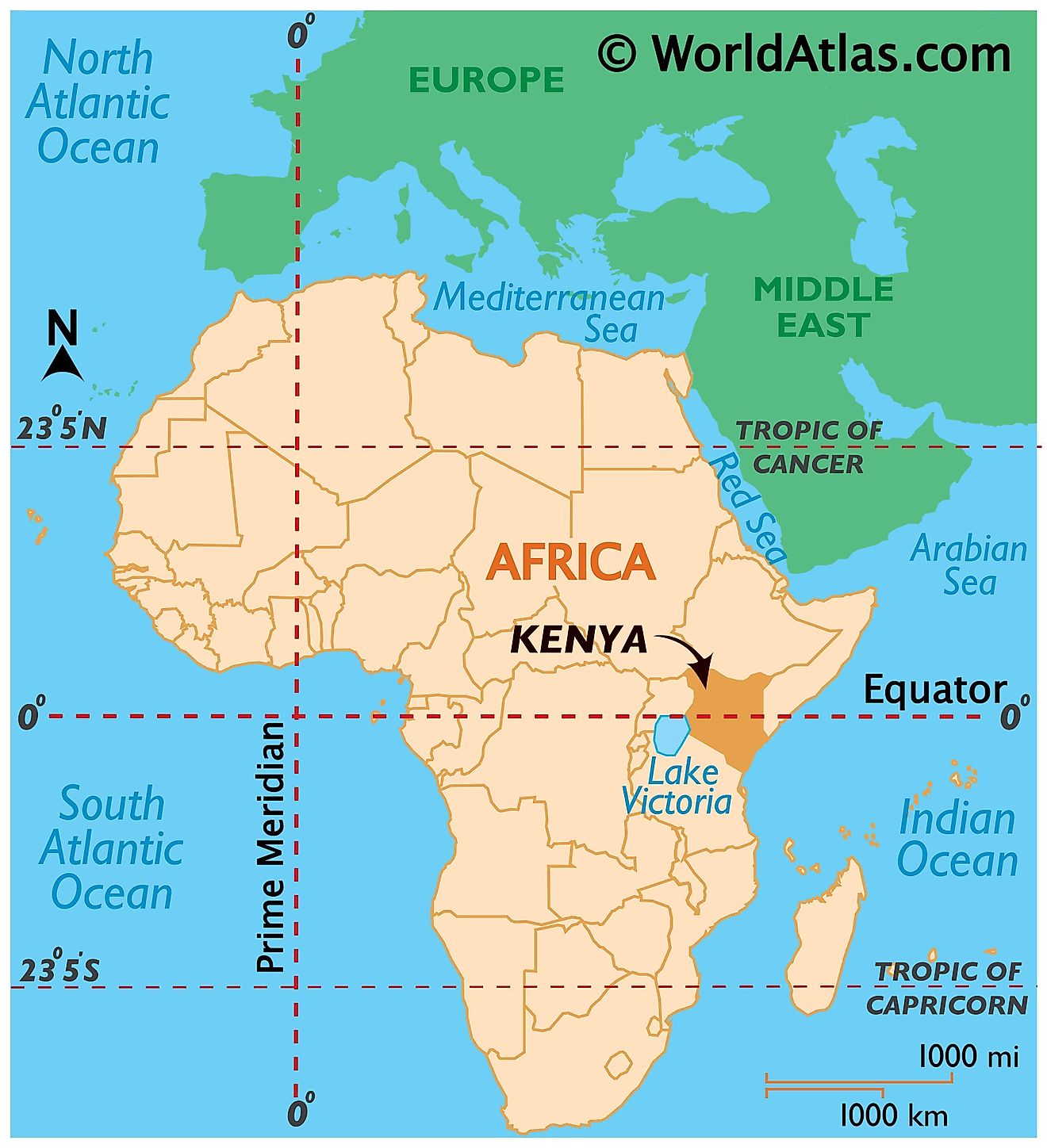
Kenya is a country in Eastern Africa. It is located in the Eastern Hemisphere. The Equator passes through the country. Five countries border Kenya. These are Ethiopia, South Sudan, Uganda, Tanzania, and Somalia to the north, northwest, west, south, and east respectively. Kenya has a coastline on the Indian Ocean to the southeast.
Kenya Bordering Countries: Somalia, Ethiopia, South Sudan, Uganda, Tanzania.
Regional Maps: Map of Africa
Outline Map of Kenya
Key Facts
| Legal Name | Republic of Kenya |
|---|---|
| Flag |
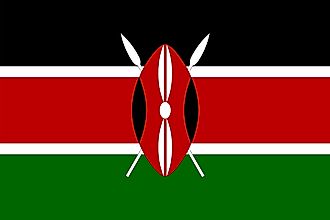
|
| Capital City | Nairobi |
| 1 17 S, 36 49 E | |
| Total Area | 580,367.00 km2 |
| Land Area | 569,140.00 km2 |
| Water Area | 11,227.00 km2 |
| Population | 52,573,973 |
| Major Cities |
|
| Currency | Kenyan shillings (KES) |
| GDP | $95.50 Billion |
| GDP Per Capita | $1,816.55 |
This page was last updated on July 25, 2023
